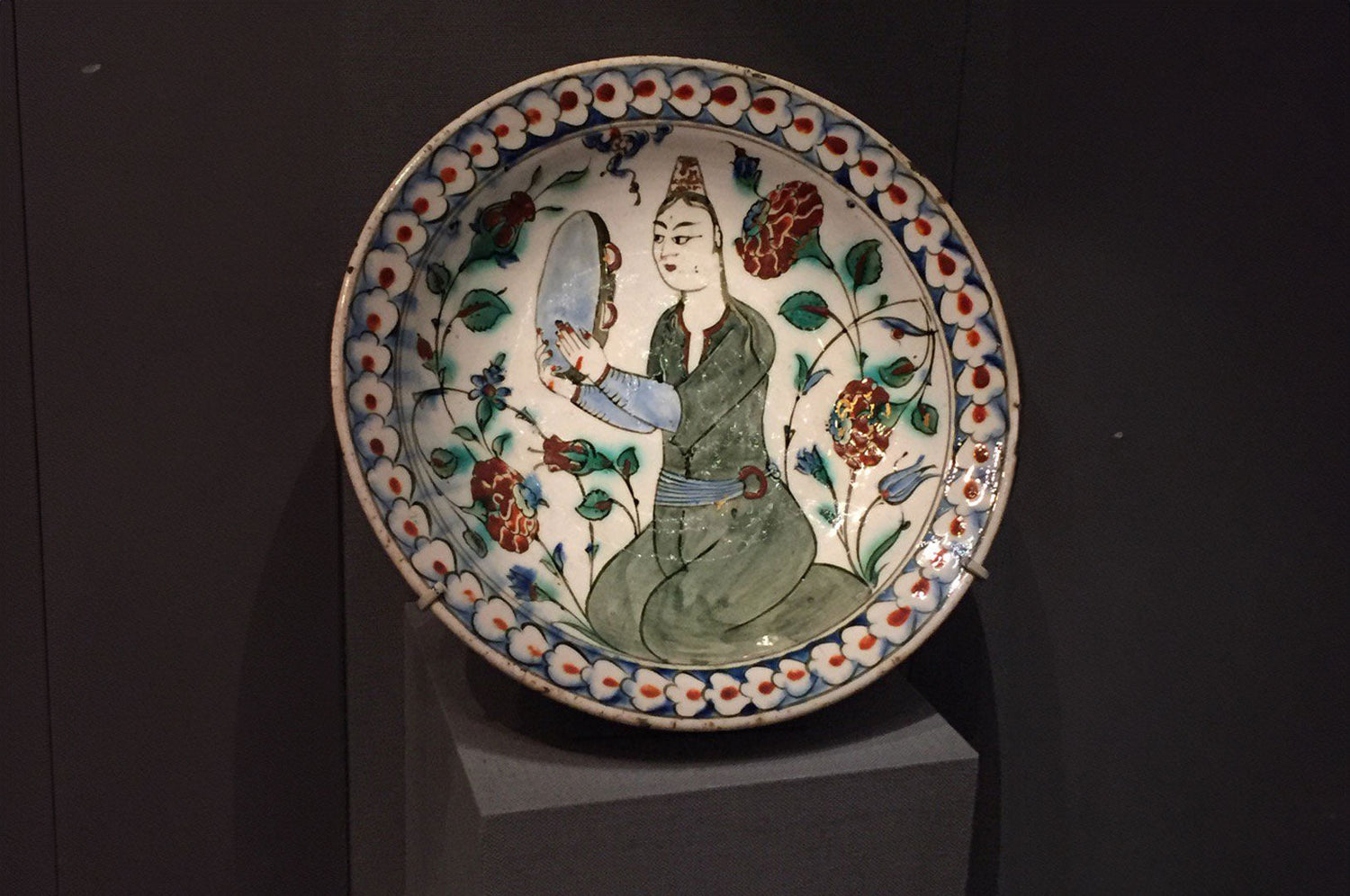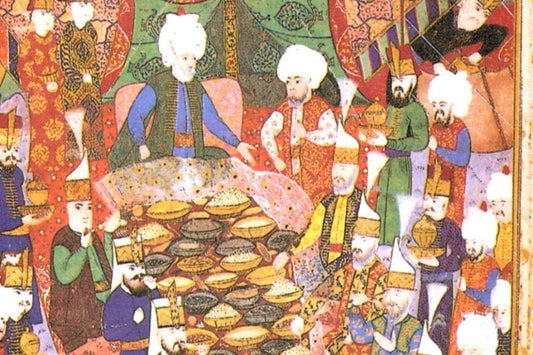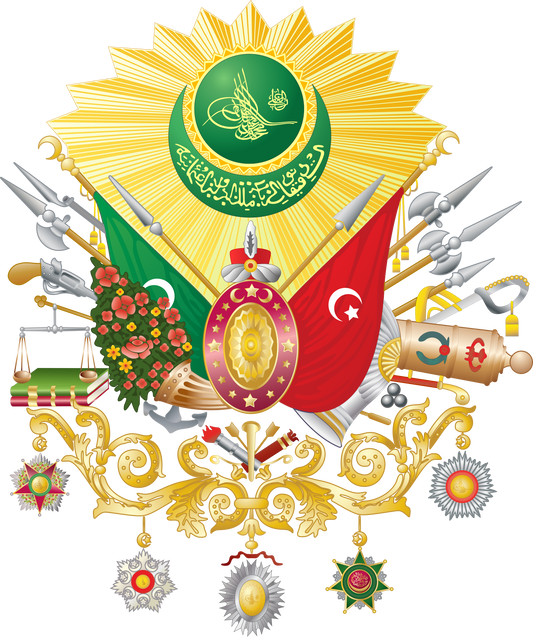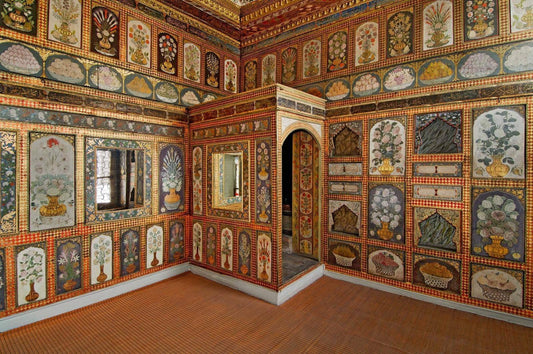Have you ever considered what works of art would look like if they conveyed the daily lives, clothing styles, and social status of people centuries ago to the present day? Turkish tile art, from the Seljuk period onward, answers this question with ceramics adorned with human figures that reflect the spirit of the times, from palace walls to home decor. These tiles shed light on the cultural and social fabric of the period not only with their striking colors and patterns, but also with the human figures they portray. In this article, we will explore the evolution of human figures in Turkish tiles and how this art form functions as a storyteller.
The Evolution of Human Figures in Turkish Tiles in the Seljuk and Ottoman Periods
Turkish tile art reached a high level of artistic expression, particularly during the Seljuk period. These tiles, which adorned palace walls throughout the 12th and 13th centuries, frequently depicted human figures on ceramic vessels produced using minai (painting with colored glazes) and luster (glazing with a metallic sheen). These works often depict scenes from sultans and palace life, shedding light on the social and cultural fabric of the period.
Iznik Tiles: A Cultural and Technical Bridge in Ottoman Art
Iznik, the Ottoman's most important center for ceramic art, is particularly noteworthy in this field. Among the historical artifacts recovered from the Iznik tile kilns are Miletus ceramics featuring human figures, which form a cultural and technical bridge between Seljuk and early Ottoman ceramics. However, during Iznik's golden age in the early 16th century, the human figure was rarely used. This offers an interesting observation about how aesthetics and social values can change during a given period.
The Period of Sultan Ahmed I: Revival of Human Figures in Iznik Tiles
In the early 17th century, during the reign of Sultan Ahmed I, human figures in Iznik tiles became popular again. The female figures depicted during this period wore small fez-like headdresses and clothing in line with the fashions of the time. The shalwar worn under the robes and the sashes or belts worn around their waists reflect the dress taste and aesthetics of the period. Flowers such as tulips, roses, and lilies surrounding the female figures, either standing or kneeling and playing the tambourine, suggest that these figures were depicted outdoors, perhaps in a garden. These details demonstrate that tiles functioned not only as decorative but also as a narrative art form.
The Impact of Daily Life on Tile Art
Although the patterns were not drawn directly in the palace atelier and sent, it is believed that the masters who created these figures were inspired by the capital, particularly by the costume albums created by bazaar painters. By the second half of the 17th century, the depiction of figures on Iznik ceramics underwent a significant transformation. More original and imaginative designs emerged, and a departure from the traditional patterns of the capital was observed. During this period, we encounter women holding flowers, men smoking pipes, and figures playing the spoon game in the center of ceramic plates. These figures are valuable examples of how daily life and individual expression were reflected in tile art.
In the second half of the 18th century, Kütahya emerged as a major center of Turkish ceramic art. Among Kütahya ceramics from this period, a remarkable group of small, rimless, deep plates decorated with human figures formed a remarkable group. These works, particularly the depiction of women in local attire, offer valuable insights into the clothing of the period. Mass production methods allowed for the rapid production of these ceramics in large quantities, but the quality of the artwork was neglected during this process. Nevertheless, the detailed depictions of shalwars, kaftans, and other traditional clothing elements enhance the cultural and historical value of these works.
Depiction of Male and Female Figures
Female figures are often depicted wearing shalwar kameez (sweeping or slouchy shalwar) with mirrored and sequined decorations, while the deep, rounded necklines of the shirts are striking. Kaftans with wide, flowing skirts are important details reflecting the fashion trends of the period. The figures in these ceramics offer insights into not only handicrafts but also social history, as these depictions reveal the dress tastes of the period and the differences between social classes.
These vessels, where male figures are less common, generally depict men mounted on horses, swinging a sword, or smoking tobacco. Occasionally, figures depicted smoking tobacco with a pipe or embroidering embroidery, offer an artistic perspective on ordinary moments of daily life. These ceramics also feature figures mounted on horses, swinging a sword, smoking tobacco with a pipe, selling livers on a pole, or holding falcons. These figures demonstrate the use of elements such as shalwar (shalwar) and vestments in men's clothing, shedding light on the men's fashion of the period.
Craftsmanship in Silver
In contrast to these human figures in Kütahya ceramics, silverware featuring human figures produced during the same period was generally crafted with much more meticulous craftsmanship. During the Ottoman period, such silverware was often made to order and richly decorated. Towards the end of the 18th century, during the period when rococo and neoclassical styles dominated, silverware decorated with repoussé (relief work) was produced for art lovers from various walks of life, including the palace and its entourage. A silver bowl, inspired by a similar concept, depicts the sultan sitting cross-legged on his throne, sword in hand, with two silahtar aghas behind him, flanked by soldiers fighting to conquer a castle. It is believed that the design of these figuratively decorated silverware utilized lithography and engravings.
The Meaning and Legacy of Human Figures in Turkish Tile Art
The depiction of human figures in Turkish tile art is an expression of a rich cultural heritage stretching from the Seljuk and Ottoman periods to modern times. These works of art convey not only the aesthetic tastes and technical skills of the period, but also social structures, fashion trends, and details of daily life. The works from the ceramic workshops in İznik and Kütahya offer a vibrant history lesson that reflects the spirit of the era. Details of clothing, festive scenes, and slices of daily life, rendered on the ceramics, prove that each piece created by these artisans is not only a work of art but also a time capsule. As we discuss in this blog post, human figures on Turkish tiles offer unique insights into the social and cultural dynamics of the past, and each of these works, as silent witnesses to history, tells its own story.




